Younger people often don't know what the term "Targa Florio" means, despite their affinity for motorsport. It is probably the most unique race track in the history of motorsport, it was (and still is) the longest with its 72 kilometers, had almost 800 bends, a 6.9km long straight (for comparison: the Hunaudières of Le Mans, also known as the Mulsanne Straight, is 6km long) and took place on normal public roads, mostly gravel roads, which were designed more for donkey carts than for 500hp racing cars.
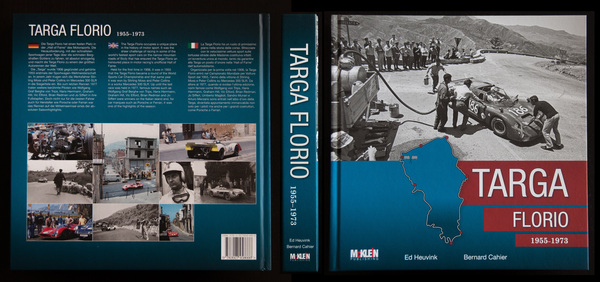
400 pages about the longest race track in motorsport history
Vincenzo Florio, an industrialist from Sicily's wine sector, founded the Targa Florio in 1906, when the first race was held on this circuit. Three laps were driven and, with its 446 km, was already considered a long-distance race.
However, the book does not go into the beginnings of the Targa Florio in too much detail, only mentioning the most important milestones on four pages. But that doesn't bother at all, because almost 400 pages are devoted to the heyday of the Targa Florio, which began in 1955 when it first became part of the World Sports Car Championship. Legendary racing drivers and racing cars that were otherwise only seen on asphalt high-speed circuits à la Nürburgring, such as the winners Stirling Moss and Peter Collins in the Mercedes 300 SLR in 1955, competed there.
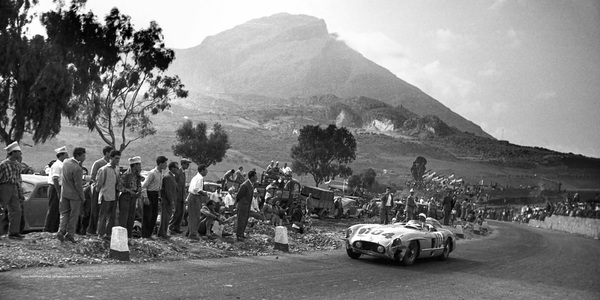
Focus on topics instead of chronology
An important feature of this fascinating book is its chapter structure: it does not lead you stubbornly chronologically through the years 1955 to 1973, but points you specifically to thematically very interesting milestones, for each of which a chapter has been dedicated. These were then sorted alphabetically according to their title and inserted into the book.
So the book starts with A for Alfa-Romeo, Accidents or Abarth, F for Filipinetti and H for Herrmann, Hezemans and Hill (Graham) up to Z for "Zzzzz...." (symbolic for photos of racing drivers during a short nap).
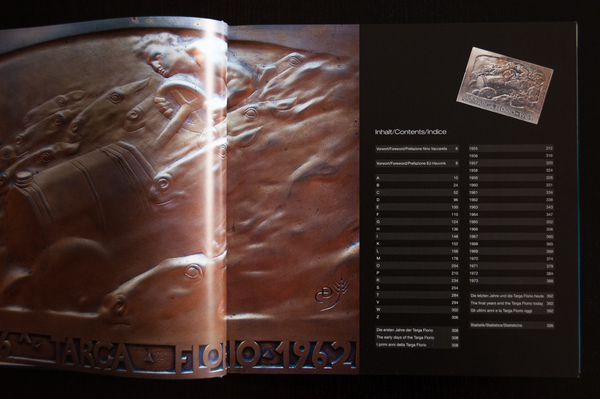
We really liked this structure as it is refreshingly different and provides a few surprises, keeping the suspense going from start to finish.
670 euros for the winner
The illustrations of documents from the time are also entertaining and historically exciting, such as the breakdown of the prize money for the 1958 Targa Florio: while the winner received 5,000,000 lire (the equivalent of €670), the participants in places 21 to 30 could only look forward to 200,000 lire (€26).
Training runs with public transport
It cannot be emphasized often enough that the Targa Florio training runs took place on a track that was not closed off! You have to imagine this: Cows, donkeys, chickens and, at best, trailers of fruit or vegetables that had not yet been cleared away could suddenly block the racing line, not to mention the civilian vehicles that still had to use the road to get to the next mountain village before the official race. Drivers also had to reckon with flocks of sheep in the opposite lane... many photos in the book show impressions of the training runs, unique!
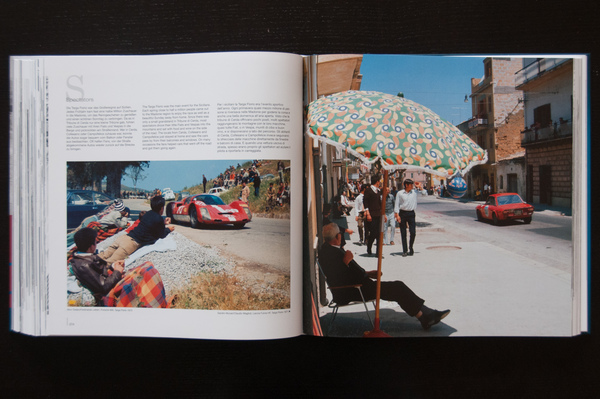
A meal with Enzo Ferrari is more strenuous than 50 laps of the Targa Florio...
Many quotes from drivers and team bosses found their way into the book, sometimes even entire chapters were written by participants at the time, such as the chapter on Sandro Munari, in which we learn that as a Lancia works driver at the time, he was loaned to Ferrari and sent to the start of the Targa Florio in a Ferrari 312PB: 450 Ferrari hp instead of 160 Lancia-Fulvia hp... And he tells of Enzo Ferrari's spontaneous visit and that he was surprisingly invited to lunch by him: just him and Enzo, "more strenuous than driving 50 laps of the Targa Florio"...
Pictures by McKlein and Cahier tell the stories
The focus of the book is certainly on the photos: thanks to the large format (31x30cm) and the pleasantly thick paper pages, they really come into their own. The range of subjects has been fully exploited and extends from landscape shots to detailed shots of engines. The photos often bring a smile to the viewer's face; many photos have never been published before, and this is what makes the book so unique.
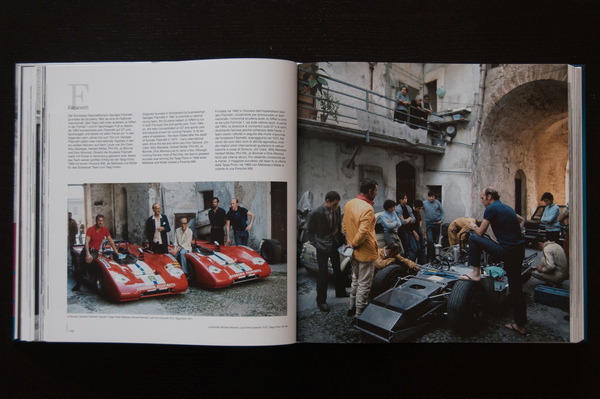
A bit of statistics
At the end of the book there are summaries for each year. All the important events are listed chronologically and the most important drivers and racing cars are mentioned. A detailed list of winners for all years forms the end of the book.
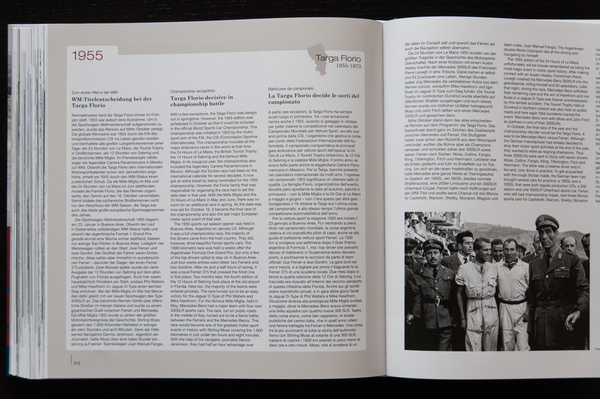
For whom is the book interesting?
The book's layout appeals to many motorsport enthusiasts: the quality of the photos is of the highest standard, also thanks to the high-quality paper selection. For fans of the World Sports Car Championships, this book is a must, as it perfectly complements the collection of books on this subject, this time from a special perspective.
All texts are written in three languages (German, English and Italian) and summarize the topics in a concise and amusing way.
Even if the book is not a reference work for historians, it still contains many details that were previously unknown. However, it cannot fulfill the claim of completeness of all details, but this would not have been possible with three languages in one book.
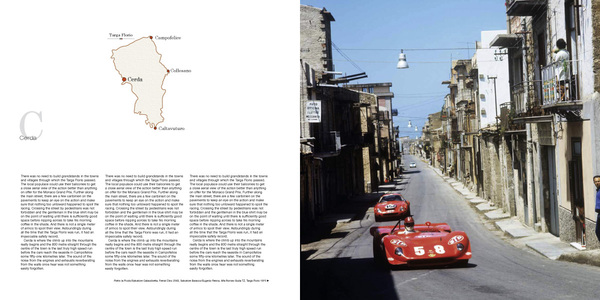
Further information
- Buy book at Amazon or directly at McKlein
- Publisher: McKlein Publishing / Verlag Reinhard Klein GbR
- Author: Ed Heuvink (he also wrote the book about Jo Siffert )
- Photos by Bernard Cahier, McKlein archive (Alois Rottensteiner, Hans-Georg Isenberg, Lars Olaf Magnil, Antonio Biasioli, Hugh Bishop) and LAT
- ISBN: 978-3927458666
- 415 pages (colored), 31x30cm, 4cm thick
- Price: Euro 99.90


































